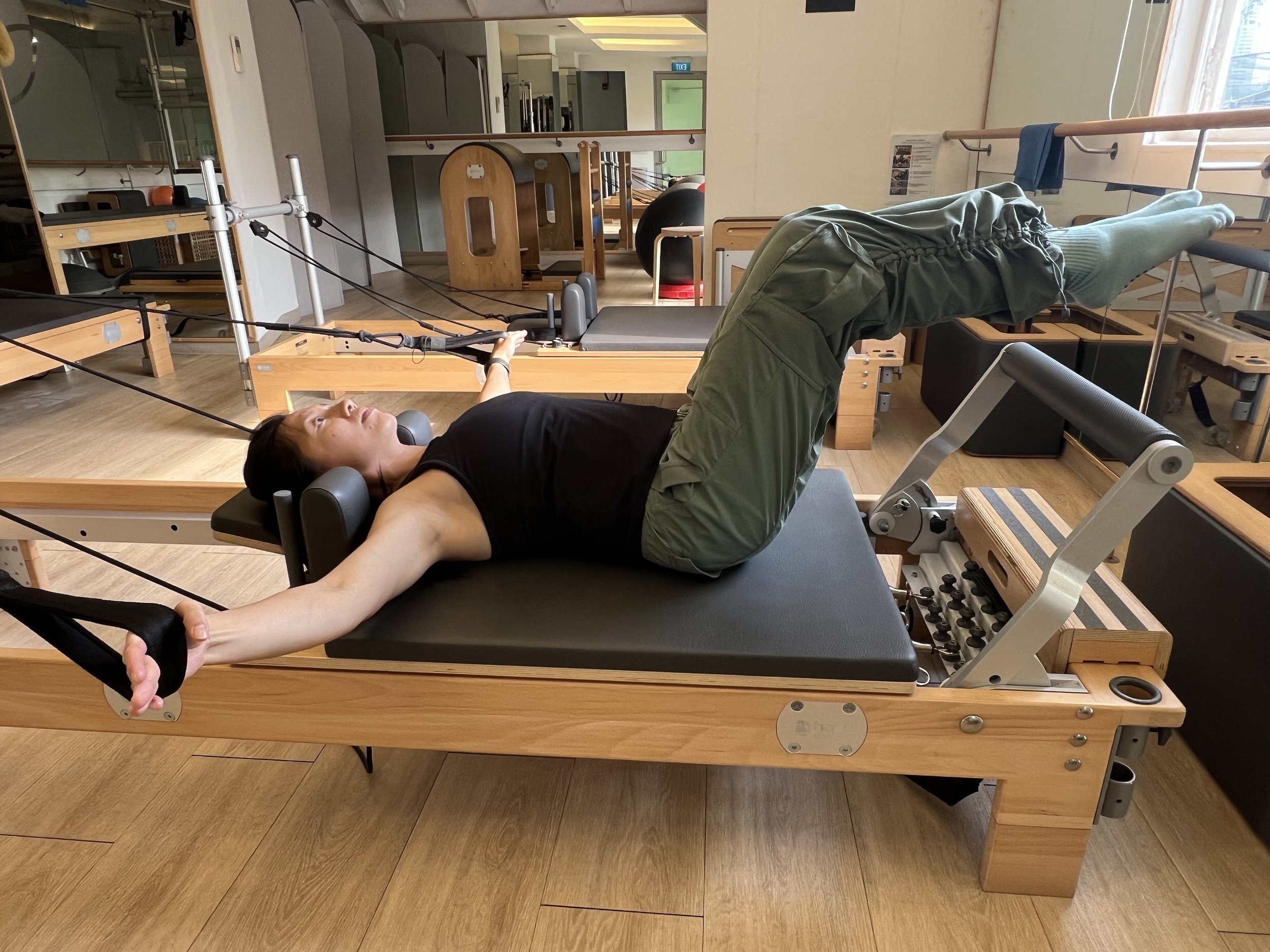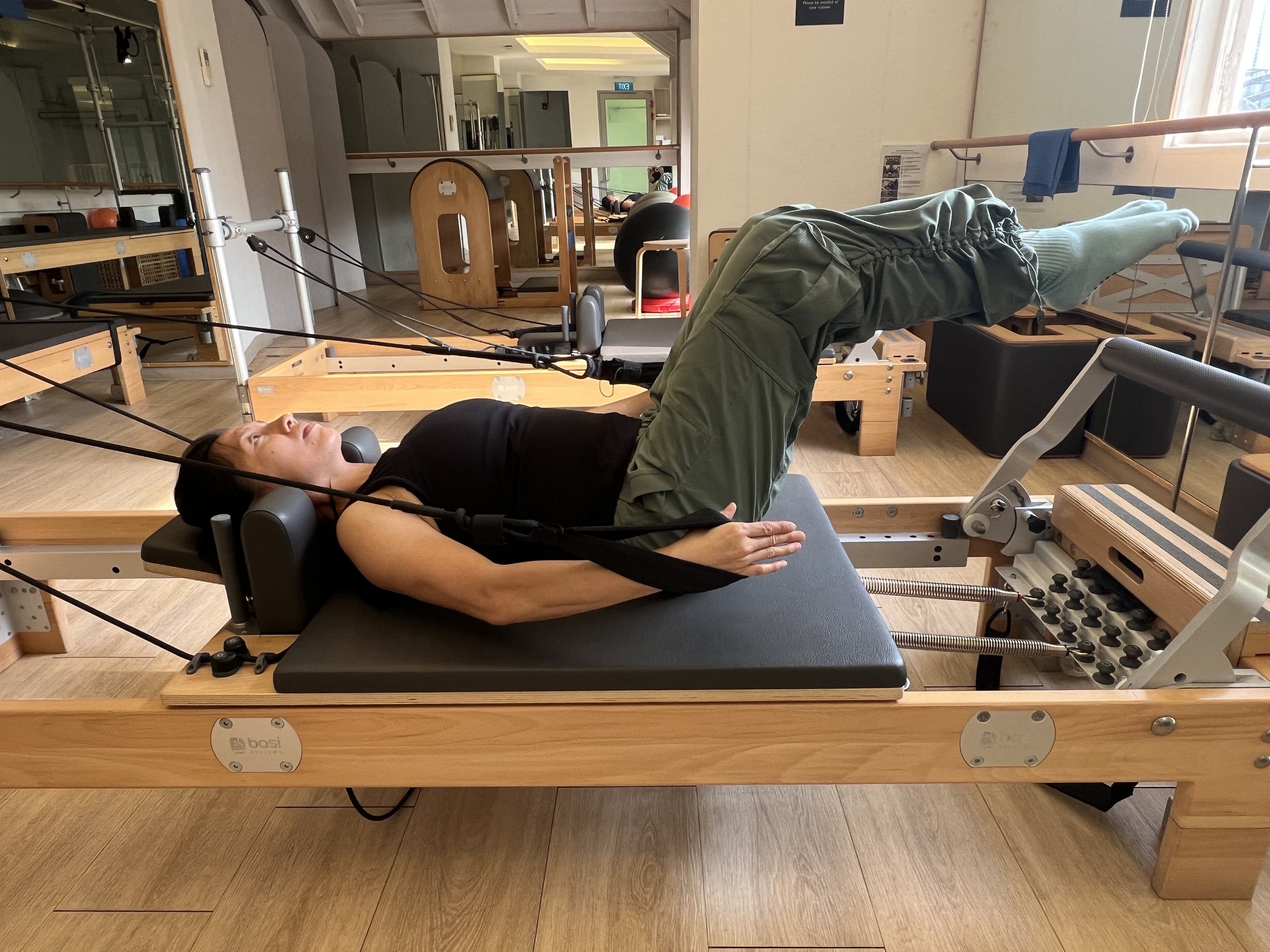Understanding Shoulder Stiffness: Causes, Symptoms, and How Pilates Can Help
Introduction
Shoulder stiffness is a common issue, especially among adults who lead sedentary lifestyles or engage in repetitive activities. This condition can limit your range of motion, cause discomfort, and affect your daily activities. Pilates, known for its focus on controlled movements, flexibility, and strength, is an excellent method to alleviate shoulder stiffness. In this article, we will explore the causes, symptoms, and how Pilates can help relieve shoulder stiffness, including both mat and equipment-based exercises.
What Causes Shoulder Stiffness?
Shoulder stiffness can result from various factors, including:
Poor Posture: Slouching or rounded shoulders can tighten the chest and weaken back muscles.
Repetitive Movements: Activities like typing, using a smartphone, or carrying heavy bags can strain shoulder muscles.
Injury or Surgery: Past injuries, rotator cuff tears, or post-surgical immobility can lead to stiffness.
Age-Related Degeneration: Conditions like arthritis or frozen shoulder become more common with age.
Common Symptoms of Shoulder Stiffness
Limited range of motion in the shoulder joint.
Pain or discomfort when moving the arm.
A feeling of tightness or tension around the shoulder.
Weakness in the shoulder muscles.
How Pilates Can Help Relieve Shoulder Stiffness
Pilates is a low-impact form of exercise that focuses on controlled, precise movements and muscle activation. Here’s how it helps with shoulder stiffness:
Improved Mobility: Pilates exercises can target shoulder mobility, helping restore full range of motion.
Gentle Stretching: Regular Pilates practice promotes flexibility in the shoulder muscles and joints.
Posture Correction: Pilates emphasizes proper posture, which can alleviate strain on the shoulders.
Strengthening Stabilizer Muscles: Pilates targets the shoulder stabilizers, reducing the risk of further injury.
Pilates Exercises for Shoulder Stiffness
Here are some effective Pilates exercises using traditional Pilates equipment that can help alleviate shoulder stiffness:
1. Reformer Arm Circles
Beginning of the arm circle movement.
Lie on the Reformer with straps in your hands and arms extended forward.
Make gentle circular motions with your arms, maintaining control.
Perform 8-10 circles in each direction.
2. Cadillac Shoulder Stretch
Sit on the Cadillac with your legs hanging off the sides and hands holding the push-through bar.
Pull the bar down, gently flexing the spine forward, then roll back up into a straight back and gently push the bar up and forward, leaning slightly forward to allow a stretch on the front of the shoulders.
Hold for 15-20 seconds and repeat 5 times.
3. Chair Swan Dive
Lie prone on the Pilates Chair with your hands on the pedal (springs attached).
Engage your core and allow the pedal to support you. Retract and depress your scapula slightly as you gently arch upwards, allowing the chest to expand.
Return to the starting position and repeat 8-10 times.
Best Practices for Safe Pilates When Dealing with Shoulder Stiffness
Consult a Professional: Always consult a qualified Pilates instructor or physiotherapist before starting.
Start with Gentle Movements: Avoid pushing too far if you are experiencing pain.
Focus on Form: Proper alignment is crucial for avoiding further strain.
Gradually Increase Intensity: Start with basic exercises and progress as your mobility improves.
FAQs: Pilates and Shoulder Stiffness
Is Pilates safe for shoulder injuries?
Yes, Pilates can be safe and beneficial, but always consult a professional instructor to ensure you are performing exercises correctly.
How often should I do Pilates for shoulder stiffness?
Aim for 2-3 sessions per week for best results.
Can Pilates replace physiotherapy for shoulder stiffness?
While Pilates is effective, it is best used as a complementary practice alongside physiotherapy.
Conclusion
Shoulder stiffness can be frustrating, but with regular Pilates practice, you can restore mobility, strengthen the shoulder muscles, and reduce discomfort. By following best practices and using targeted exercises, Pilates can become a valuable tool in your journey to shoulder health.






